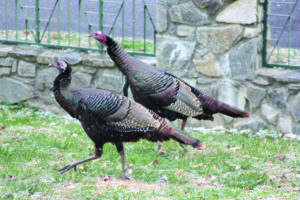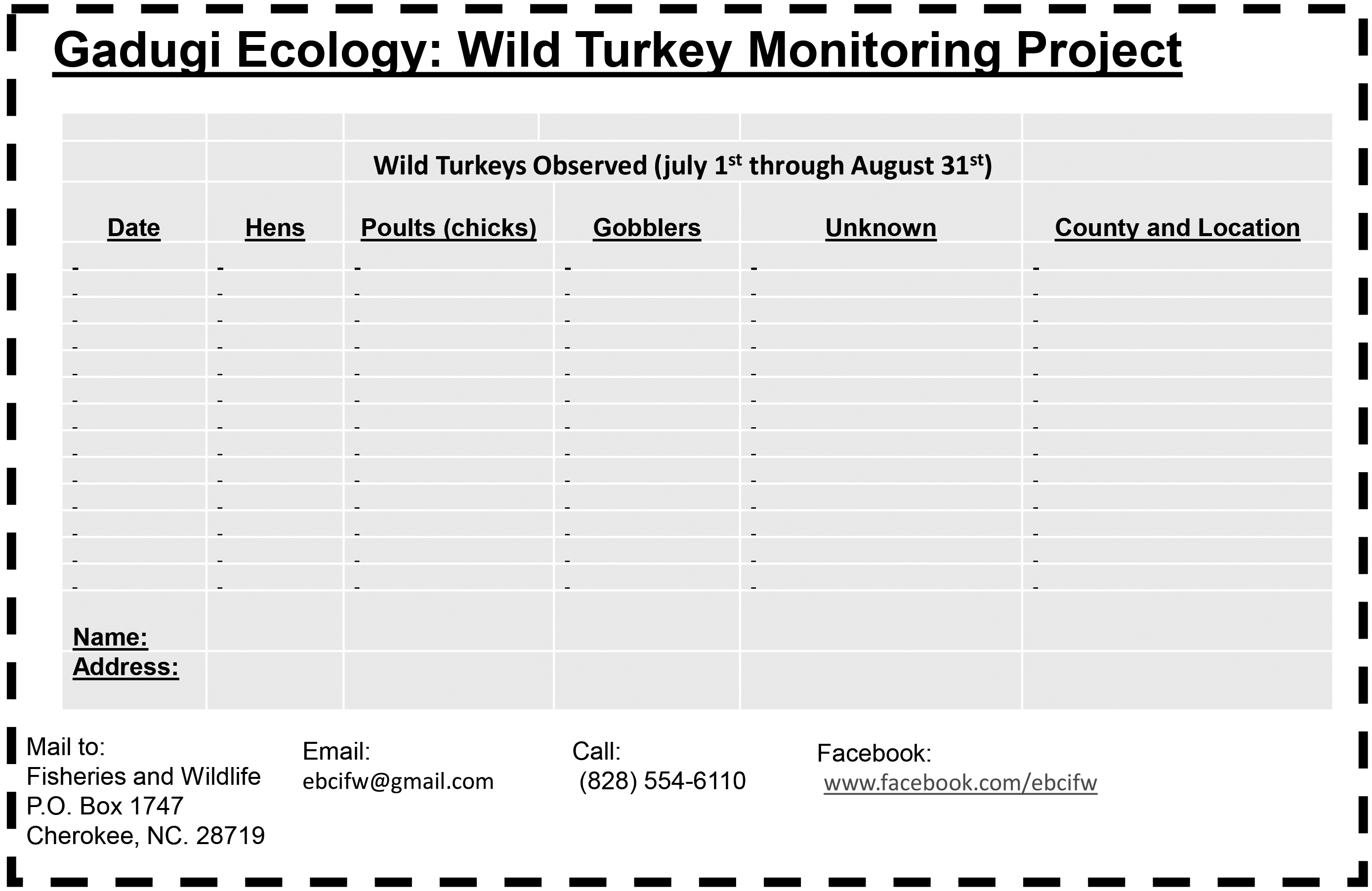By MIKE LAVOIE
One of the most challenging efforts for natural resource managers is collecting information about all of the many plants and animals in an area. However, our Cherokee community may be well equipped to do this. With the growth of media sources like smart phones and social networking, we can develop a new and convenient way of monitoring our environment.

Cherokee Fisheries and Wildlife Management is asking community members to fill out the attached data card when they observe turkeys such as these seen in Cherokee several winters ago. (SCOTT MCKIE B.P./One Feather)
Recently, so-called “citizen science” is used where hundreds of citizens compared to a few biologists will better collect animal locations, activity and behavior. This kind of community effort is not new to Cherokee citizens.
Traditionally, Cherokee people relied on their neighbors to complete important tasks like harvesting crops or building houses, which still exists today. These community efforts are termed “gadugi” in the Cherokee language. Therefore, we would like to promote what we call “GADUGI ECOLOGY.” This traditional perspective, coupled with modern technology, will make us pioneers in combining community with conservation. Most importantly, this effort will help re-connect people with their natural resources.
The months of July and August are an important time of year for “citizen scientists” to help biologists understand how our wild turkey populations are doing. Counting and recording the number of gobblers, hens, and chicks (also known as poults) we see this time of year can tell us a lot about the health of a turkey population. Through these counts we can evaluate biological information such as nesting success, overall productivity, and gobbler survival.
Cherokee Fisheries and Wildlife Management is asking community members to fill out the attached data card when they observe turkeys on Cherokee lands between July 1 and Aug. 31. You can return the information to us by mail, hand delivery, email, or just Facebook message us your results. Your assistance will greatly help us ensure we conserve this important game bird for future generations.
Mike is the program manager for Cherokee Fisheries and Wildlife Management.






